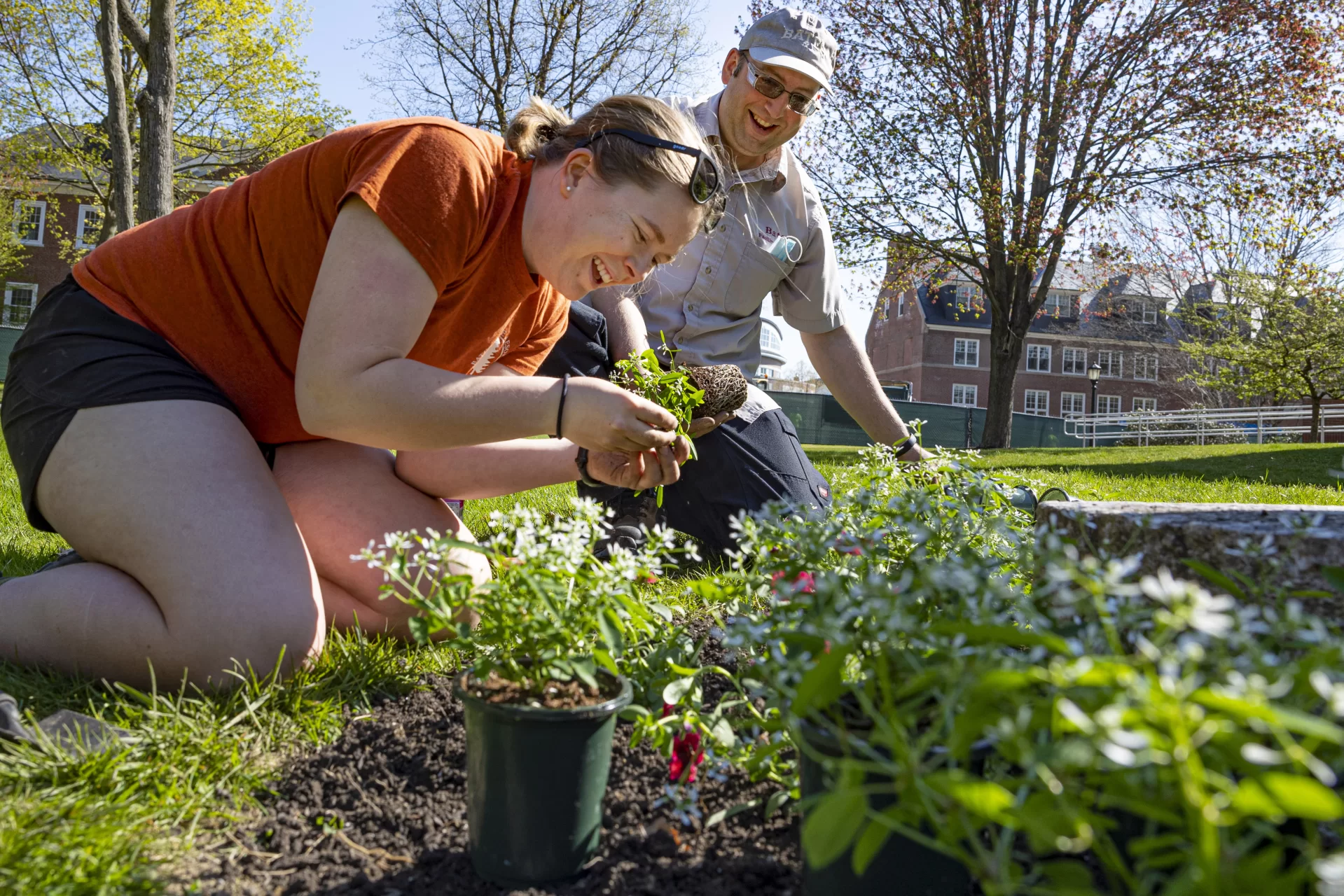It’s Commencement, time for the annual annual plantings around campus
“Many hands make light work,” they say, and as the countdown to Commencement hits its final hours, the handiwork of the Facility Services grounds crew — a team bolstered by the addition of student helpers during Short Term — is seen everywhere on campus.
Like in front of Coram Library, where springtime color now encircles the base of the Class of 1932 Sundial thanks to two newly planted annuals, white euphorbia and vibrant red calibrachoa.
Charlotte Collins, a senior from Woolwich, Maine, helped Jeremy Lavertu, the horticulture lead for Grounds and Maintenance, plant the flowers. In a couple days, Collins will be able to see how they’re doing: She and her classmates walk right by the sundial as they take their seats at Commencement, on Sunday, May 29, and they’ll recess past it afterward.
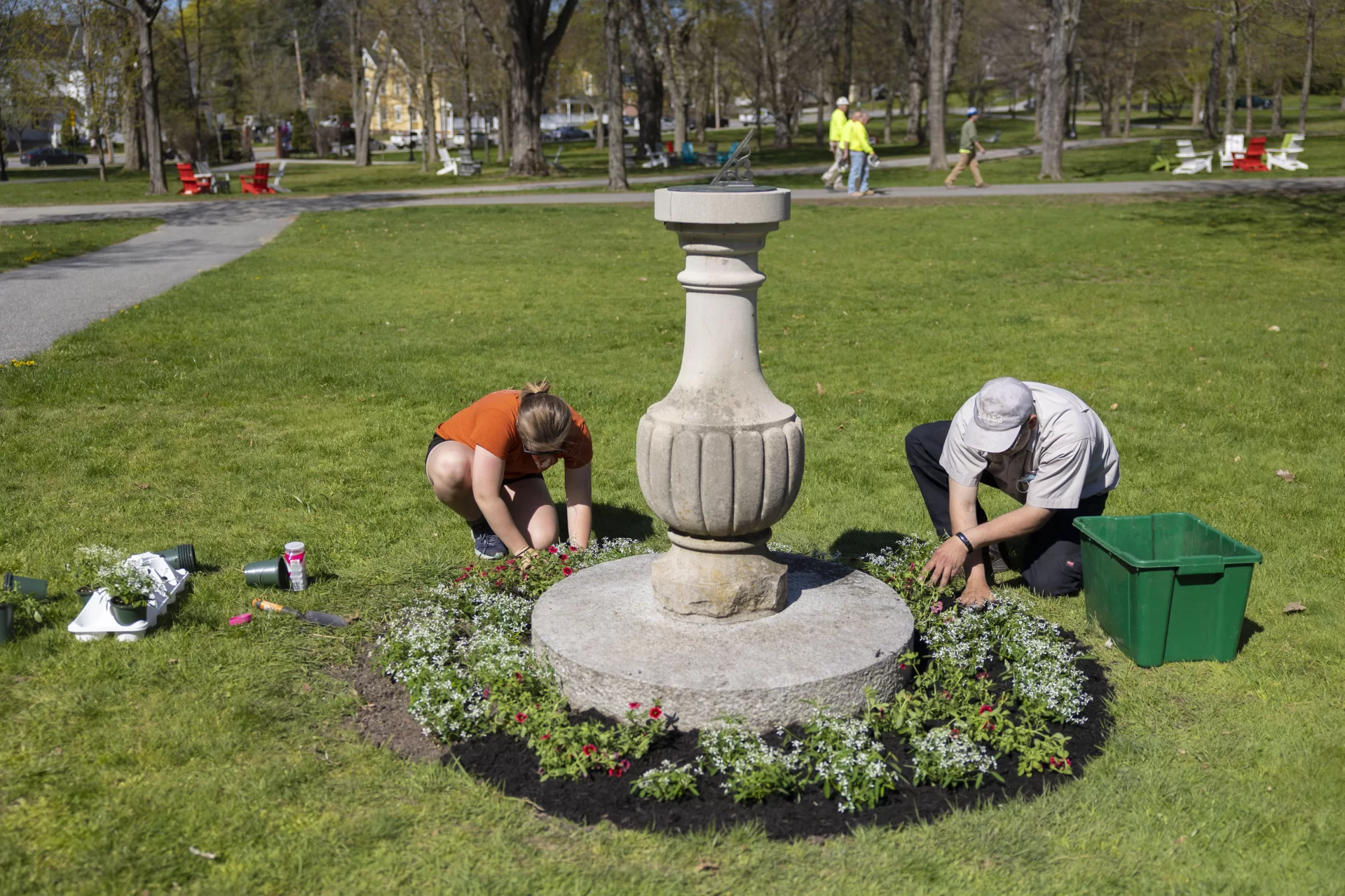
Among the student workers, it’s a point of pride, says Collins, to help make the campus look great for everyone. For the seniors on the crew, which numbers about a dozen, “I think it feels wonderful to make the campus look beautiful for our own Commencement.”
She and Lavertu have planted hundreds of flowers all over campus. The new flowers weren’t snapped up at the local big box store, but grown from seedling plugs by the grounds crew and their student workers in a campus greenhouse located a few paces from Cutten Maintenance Center.
Step into the greenhouse, and you’re greeted with green as far as can be seen, splashes of bright floral colors everywhere thanks to the assortment of petunias, begonias, German ivy, calibrachoa, cleome, and angelonia.
The begonias are Collins’ favorites: She likes their dark green leaves and deep pink blossoms.
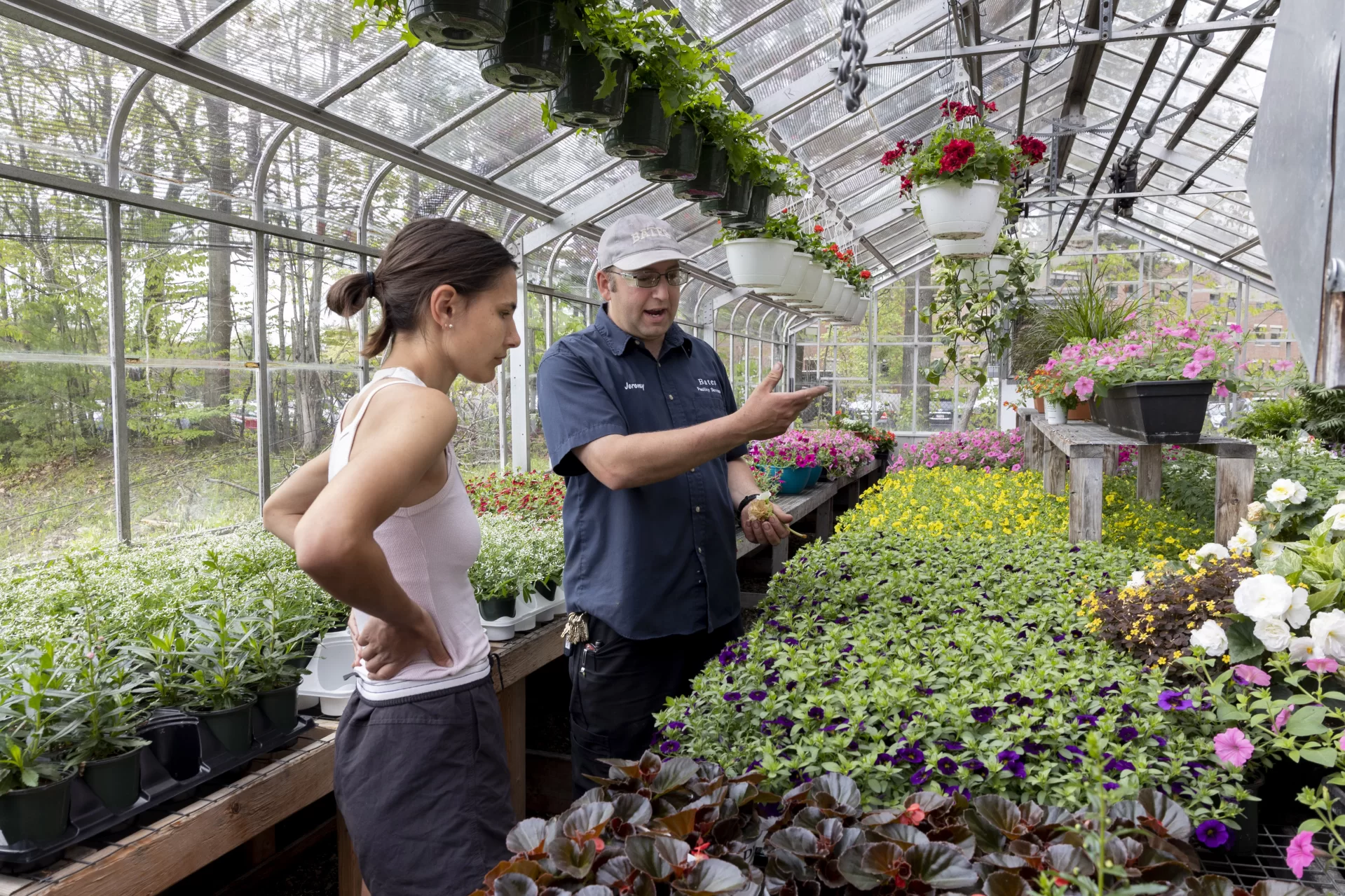
While winter does wipe away the previous seasons’ annuals, it doesn’t take away Lavertu’s memory of what goes where. He worked with Bill Bergevin, who oversaw campus greenery for years before his retirement in 2018, and paid attention to locations of all the traditional spring plantings.
Transplanting the flowers is a whole process: the flats of plants have to be loaded onto a golf cart trailer and taken to the chosen spot. This day it’s the sundial. Other high-visibility spots include pathways taken by Admission tours. Lavertu likes the idea that visitors will see the blooms. “They make people happy.”
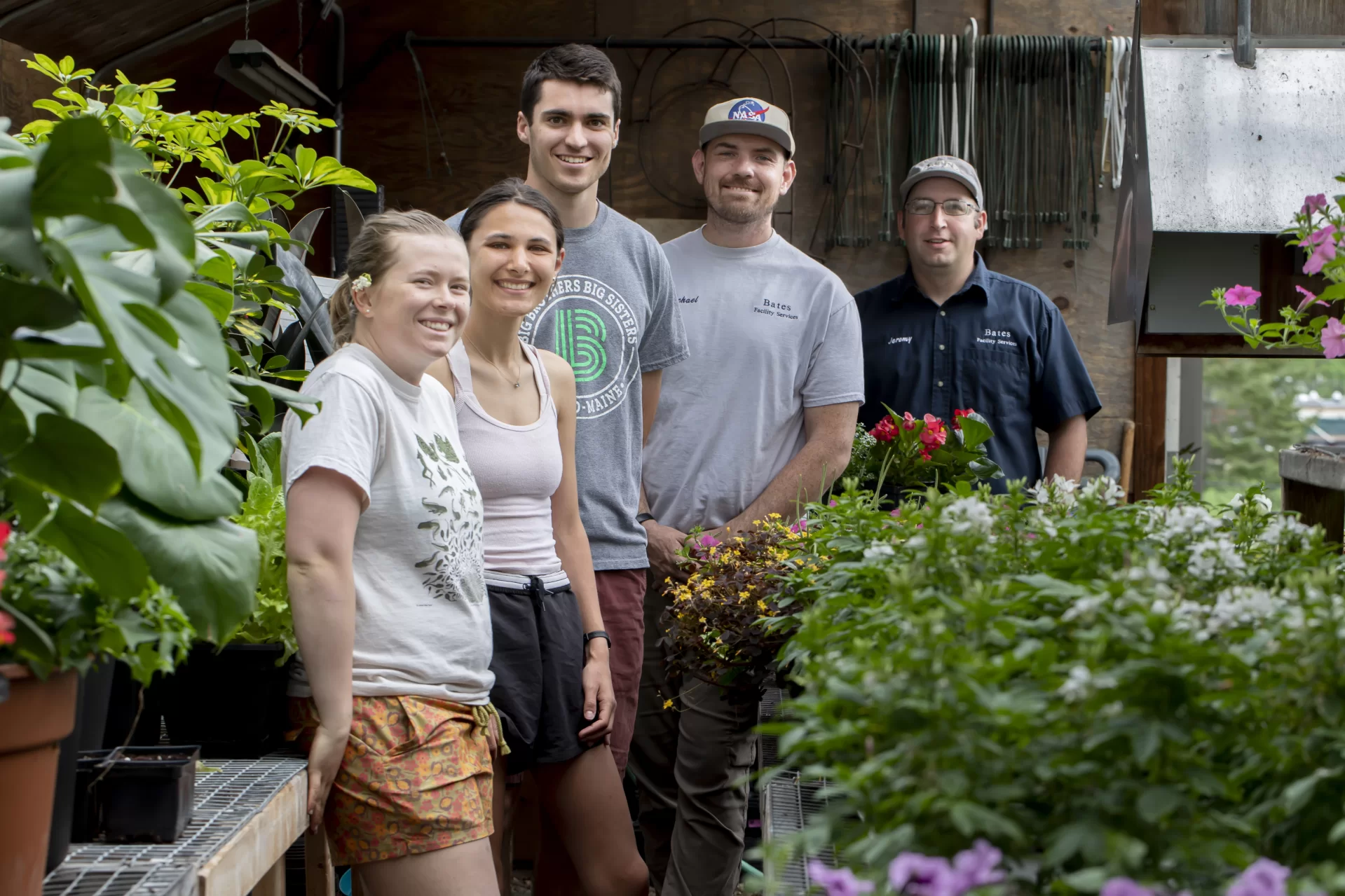
Before putting their 40-plus flowers in the ground, Lavertu and Collins talk about the ratio of red to white. Once the pattern is decided, they dig holes and place the plants. They take turns sprinkling tiny light brown pellets, about the size of peppercorns, from a plastic shaker, then give the flowers a good soaking.
The fertilizer is Osmocote, says Lavertu, a brand of slow-release fertilizer that releases nutrients gradually over six months. “It’s slow,” he says, “but it’ll do its magic eventually.” The nutrient pills are activated by water, and then they release their nutrients in reaction to changes in temperature. This makes the fertilizer very beneficial during the hotter summer months, says Lavertu.
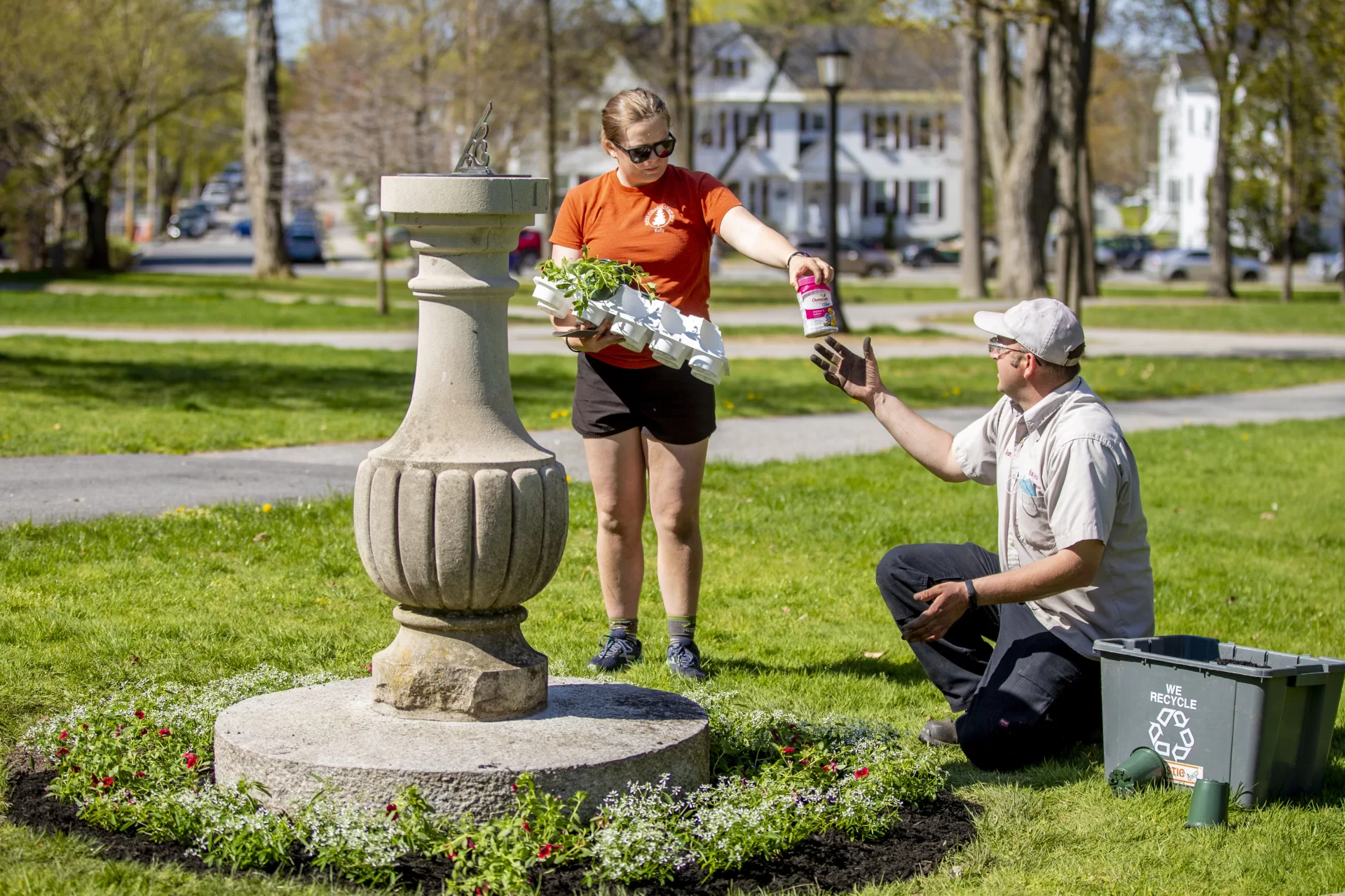
Once the sundial is surrounded by a riot of red and white, Lavertu brings out a tub of black mulch, and he and Collins spread it out. “Mulch makes everything prettier,” she says. “Some people don’t like the smell, but honestly I love it.”
Collins grew up on a family-run organic farm in Woolwich, which provides a community supported agriculture garden, or CSA. “We had about 25 families coming in every weekend to pick up vegetables, and we had sheep and chickens, too.”
She misses the farm, but most of all, she misses the sheep, and more specifically, lambing season.
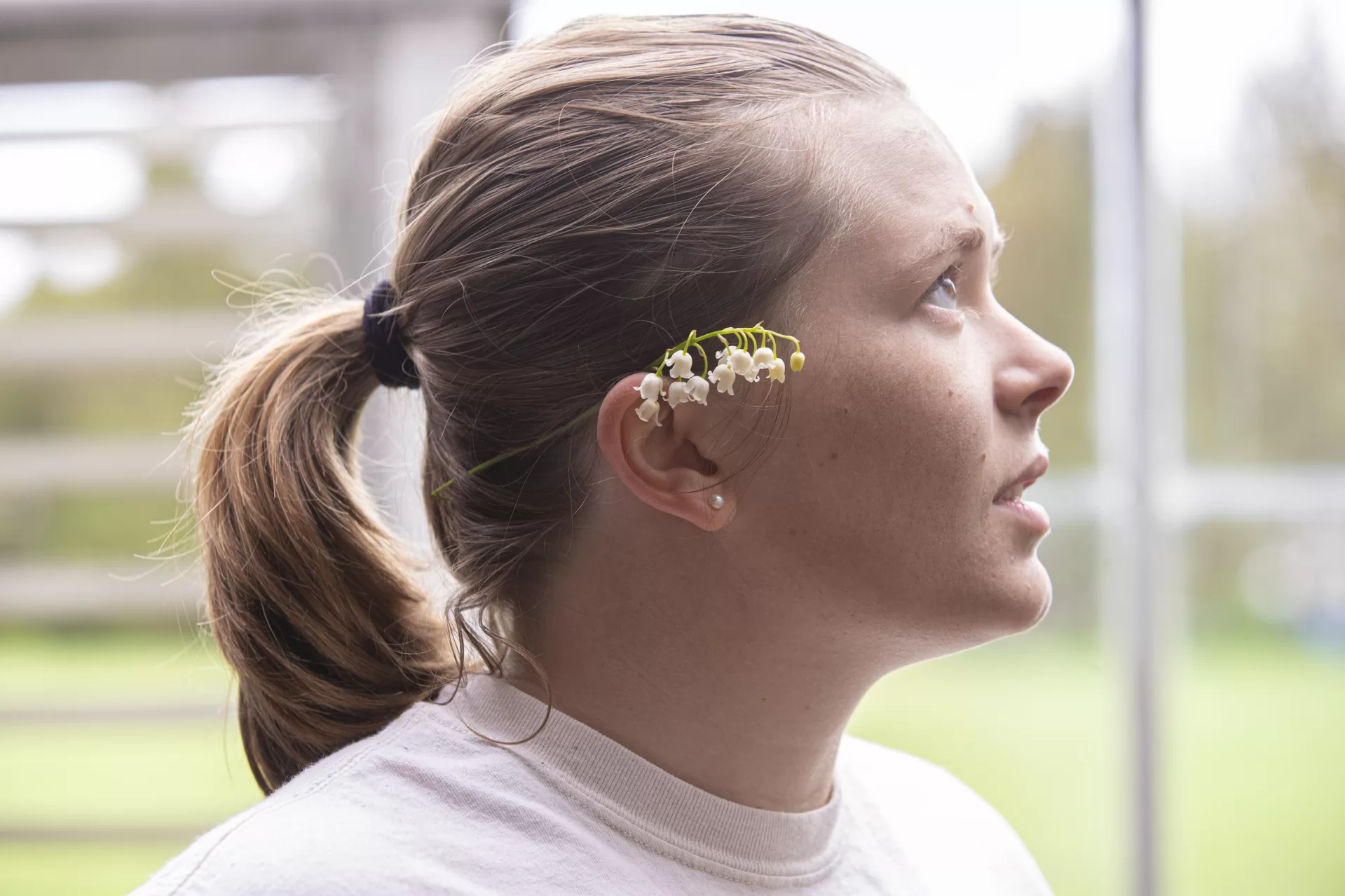
Lambing season is in April, “around the same time you’d be getting your chicks from the tractor store,” says Collins. “And it was right around my birthday, so it was always exciting. I’d try to get up earlier than all my sisters, so I could be the first one out to the barn to see if there was a new lamb. Sometimes the lamb would have squeezed under the fence into the pasture, to be with its momma, and then I’d get to ‘rescue’ it,” she says, laughing. “It’d be all wet and covered in placenta and all sorts of gross stuff, but it was so fun.”
So Collins is not afraid to get her hands dirty — in fact, she relishes it. “Growing up, weeding was the worst punishment. But now that I’m an adult, I could honestly spend hours doing just that. My dad laughed at me and told me, ‘I told you so!’” She smiles. “Really, the best feeling is dirt between your toes and fingers.”
At this point, she glances at Lavertu, recalling what he taught her, and what his own college teachers taught him: Dirt gets on your hands and clothes, while soil is rich with nutrients and decomposing organic matter.
“Soil, not dirt,” she says.
